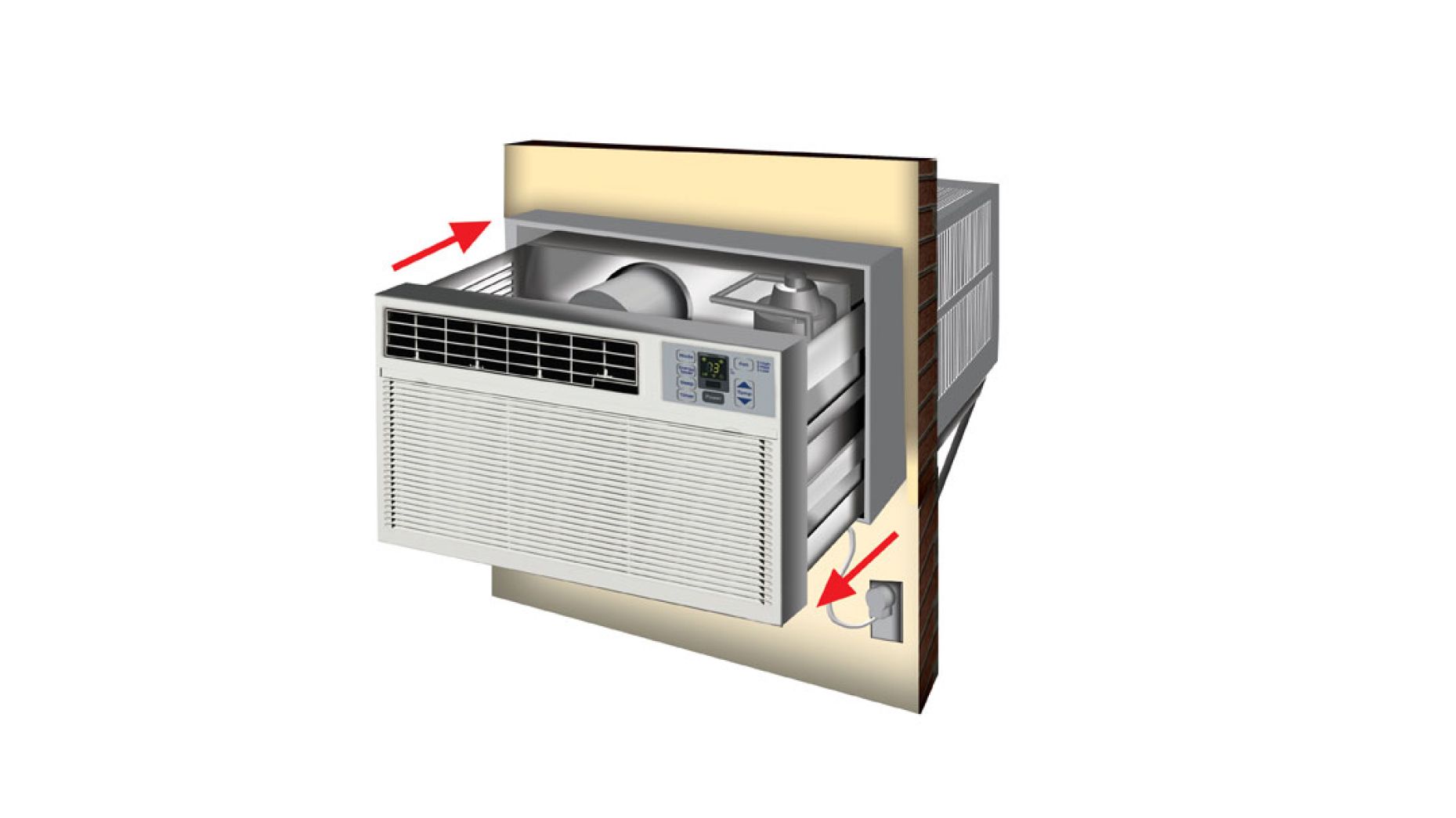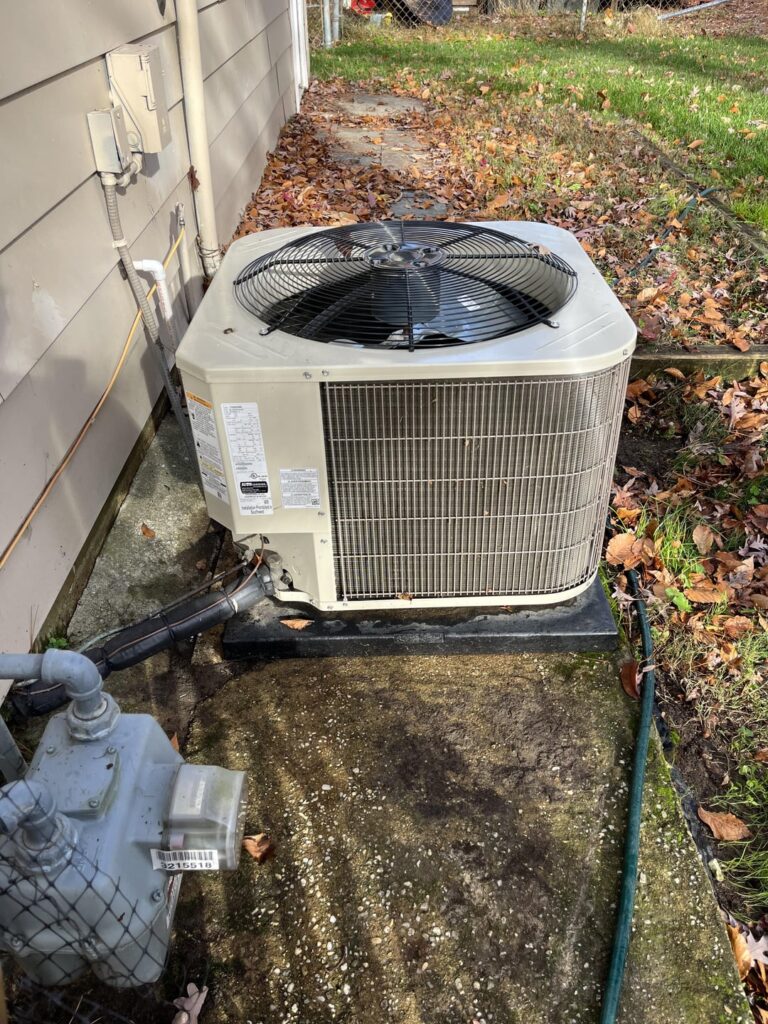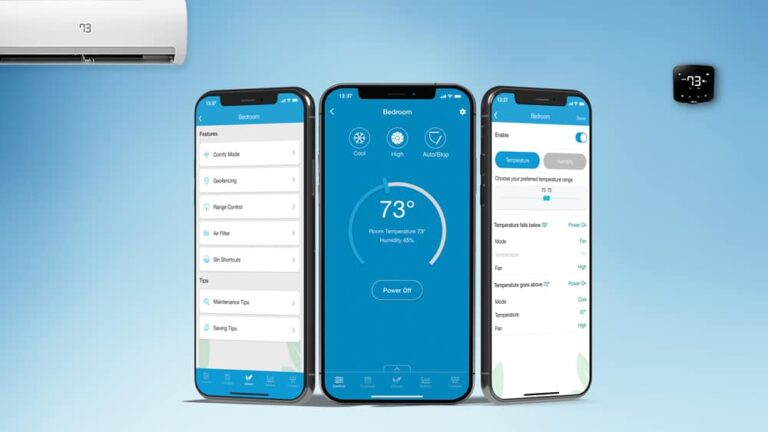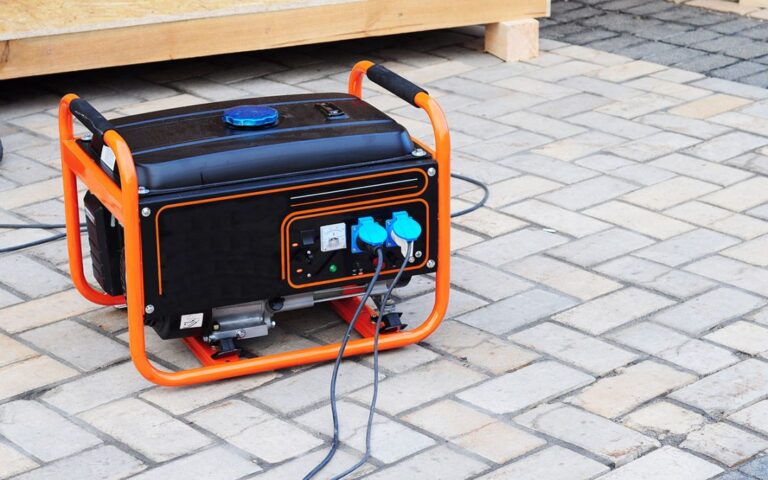Can I Put An Air Conditioner In A Room With No Windows? Expert Tips
Yes, you can put an air conditioner in a room with no windows. Portable or ductless mini-split air conditioners work well.
Living in a room without windows can be challenging, especially during hot weather. Traditional window air conditioners are not an option. Fortunately, there are alternatives. Portable air conditioners are a popular choice. They require an exhaust hose to vent hot air outside, which can be done through a wall opening or a drop ceiling.
Ductless mini-split systems are another effective solution. They consist of an indoor unit and an outdoor compressor, connected by a conduit. These options provide efficient cooling without the need for windows. This ensures comfort in windowless rooms.
Choosing The Right Air Conditioner
Finding the right air conditioner for a room with no windows can be challenging. Different types of air conditioners work better for different setups. This section will help you choose the best option for your room without windows.
Portable Units
Portable air conditioners are a great choice for rooms without windows. They are easy to move and require no permanent installation.
- Easy to set up: No need for professional installation.
- Compact and mobile: Can be moved from room to room.
- Affordable: Generally cheaper than other types.
- Versatile: Can be used in different settings.
Most portable units come with a hose to vent out hot air. You can use a venting kit to direct the hose through a wall or ceiling.
Ductless Mini-splits
Ductless mini-split air conditioners offer a permanent solution. They are efficient and effective for cooling rooms without windows.
- Energy-efficient: Consumes less power than portable units.
- Quiet operation: Produces less noise.
- Flexible installation: Can be installed on a wall.
- Improved air quality: Includes filters to clean the air.
Though more expensive, ductless mini-splits provide long-term benefits. They need professional installation, but they offer superior cooling and efficiency.

Credit: www.quora.com
Ventilation Options
Putting an air conditioner in a room with no windows can be tricky. Proper ventilation is crucial to ensure efficient cooling. Here are some ventilation options to consider.
Through-the-wall Vents
Through-the-wall vents are a practical solution. They allow the air conditioner to vent hot air outside. This method involves cutting a hole in the wall.
The air conditioner unit fits snugly in this hole. Ensure the vent is sealed properly to avoid air leaks. This option is popular for rooms without windows.
Here are the steps to install a through-the-wall vent:
- Measure the air conditioner dimensions.
- Mark the wall for cutting.
- Use a saw to cut the hole.
- Install the air conditioner.
- Seal the edges with caulk.
Drop Ceiling Vents
Drop ceiling vents are another viable option. These vents work well for rooms with suspended ceilings. They help circulate air efficiently.
The air conditioner vents hot air into the ceiling space. Ensure the ceiling space is well-ventilated. This helps in maintaining room temperature.
Here’s how to use drop ceiling vents:
- Identify a suitable spot in the drop ceiling.
- Cut a hole for the vent.
- Install the vent cover.
- Connect the air conditioner to the vent.
- Ensure proper airflow in the ceiling space.
| Ventilation Option | Benefits | Considerations |
|---|---|---|
| Through-the-Wall Vents | Effective, Permanent Solution | Requires Wall Modification |
| Drop Ceiling Vents | Easy to Install, No Major Modifications | Requires Well-Ventilated Ceiling Space |
Installing Through-the-wall Ac
Installing a through-the-wall air conditioner in a room without windows can be a lifesaver. It provides a steady flow of cool air, even in rooms without windows. This method ensures you can enjoy a comfortable indoor climate.
Required Tools
Before starting, gather all necessary tools and materials:
- Measuring tape
- Level
- Drill
- Saw
- Screwdriver
- Caulk
- Wall sleeve
- Through-the-wall air conditioner
Step-by-step Guide
- Measure and Mark: Measure the wall area where the AC will fit. Use a level to mark the area.
- Cut the Hole: Use a saw to cut the marked area. Ensure the hole fits the wall sleeve.
- Install the Wall Sleeve: Place the wall sleeve into the hole. Use a level to make sure it is even.
- Secure the Sleeve: Drill holes and use screws to secure the sleeve. Ensure it is tightly fixed.
- Insert the AC Unit: Slide the AC unit into the wall sleeve. Make sure it fits snugly.
- Seal the Gaps: Use caulk to seal any gaps around the unit. This prevents air leaks.
- Test the AC: Plug in the AC and test it. Ensure it is working properly.
With these steps, your through-the-wall AC will keep your room cool and comfortable. Enjoy your new air conditioning solution.
Portable Air Conditioner Setup
Setting up a portable air conditioner in a room with no windows is possible. These units are versatile and can cool any room efficiently. Follow these steps for a successful setup.
Exhaust Hose Installation
The exhaust hose is essential for a portable air conditioner. It removes hot air from the room. Here’s how to install it:
- Find an appropriate venting location. A door or ceiling vent works well.
- Connect the exhaust hose to the air conditioner unit.
- Secure the other end of the hose to the venting kit.
- Ensure the hose is straight without kinks or bends.
Maintenance Tips
Proper maintenance ensures your air conditioner runs smoothly:
- Clean the filters every two weeks. This improves air quality and efficiency.
- Check the exhaust hose regularly. Make sure there are no obstructions.
- Empty the water tank if your unit has one. This prevents overflow and mold.
| Task | Frequency |
|---|---|
| Clean Filters | Every 2 Weeks |
| Check Exhaust Hose | Weekly |
| Empty Water Tank | As Needed |
Ductless Mini-split Installation
Installing a ductless mini-split is an excellent solution for rooms without windows. These systems provide efficient cooling without the need for extensive ductwork. They consist of an indoor unit and an outdoor unit, both crucial for proper installation.
Indoor Unit Placement
The indoor unit should be placed on a wall where it can distribute air evenly. Make sure the unit is not obstructed by furniture or other objects. It’s important to mount the unit high on the wall to ensure optimal airflow.
- Choose a central location for better air distribution.
- Avoid direct sunlight to maintain efficiency.
- Ensure easy access for maintenance and cleaning.
Proper placement enhances the unit’s efficiency and lifespan. Consider using a professional for precise installation.
Outdoor Unit Considerations
The outdoor unit needs a suitable location outside your home. It should be placed on a flat surface, away from heavy foot traffic. Make sure it has enough space around it for proper ventilation.
- Keep it away from direct sunlight and rain.
- Avoid placing it near plants or shrubs.
- Ensure there is at least 12 inches of clearance on all sides.
Correct placement of the outdoor unit ensures efficient operation. This also helps in reducing noise levels inside your home.
| Indoor Unit | Outdoor Unit |
|---|---|
| High wall placement | Flat, stable surface |
| Central location | 12 inches clearance |
| Avoid obstructions | Away from plants |
Installing a ductless mini-split in a windowless room can be straightforward. Just follow these guidelines for optimal performance.

Credit: www.tcl.com
Managing Humidity Levels
Using an air conditioner in a room with no windows can be tricky. One of the biggest challenges is managing humidity levels. High humidity can make the room uncomfortable and can lead to mold growth. To keep the room comfortable, you need to manage the humidity.
Dehumidifier Options
One option is to use a dehumidifier. Dehumidifiers reduce moisture in the air. Here are some types of dehumidifiers:
- Portable Dehumidifiers: Easy to move and set up.
- Desiccant Dehumidifiers: Use chemicals to absorb moisture.
- Whole-House Dehumidifiers: Connect to your HVAC system.
Portable dehumidifiers are the most flexible. Desiccant dehumidifiers work well in cooler conditions. Whole-house dehumidifiers are great for larger spaces.
Integrated Solutions
Some air conditioners have built-in dehumidifiers. These units can cool and dehumidify at the same time. This is a smart way to save space and energy. Look for units with a dehumidification mode.
Here is a simple comparison table for integrated solutions:
| Type | Pros | Cons |
|---|---|---|
| Portable AC with Dehumidifier | Flexible, easy to set up | May need frequent emptying |
| Windowless AC Units | Suitable for rooms with no windows | May be costly |
| Split AC with Dehumidifier | Energy-efficient, quiet | Installation required |
Choosing the right solution will help you manage humidity. This will make your room more comfortable.
Safety And Efficiency Tips
Putting an air conditioner in a room with no windows can be tricky. It requires careful planning to ensure safety and efficiency. This section will cover essential tips for energy-saving practices and regular maintenance.
Energy-saving Practices
Using an air conditioner efficiently saves money and helps the environment. Here are some energy-saving tips:
- Insulate the Room: Proper insulation keeps cool air inside.
- Use Curtains or Blinds: Block heat from other areas.
- Seal Gaps: Close gaps around doors and vents.
- Use Fans: Distribute cool air more evenly.
- Set the Thermostat: Keep it at a comfortable temperature.
Regular Maintenance
Maintaining your air conditioner ensures it runs efficiently and safely. Follow these simple steps:
- Clean the Filters: Dirty filters reduce airflow.
- Check the Coils: Clean coils improve cooling.
- Inspect the Fins: Bent fins block airflow.
- Clear the Drain: A clogged drain can cause leaks.
- Schedule Professional Check-ups: An expert can spot issues early.
Here is a table summarizing the tips:
| Energy-Saving Tips | Regular Maintenance Tips |
|---|---|
| Insulate the Room | Clean the Filters |
| Use Curtains or Blinds | Check the Coils |
| Seal Gaps | Inspect the Fins |
| Use Fans | Clear the Drain |
| Set the Thermostat | Schedule Professional Check-ups |
By following these tips, you can keep your room cool and comfortable. Stay safe and save energy with these practices.

Credit: evapolar.com
Cost Considerations
Installing an air conditioner in a room with no windows can be tricky. Understanding the cost considerations helps you make the right choice. This section breaks down the initial investment and long-term savings.
Initial Investment
The initial investment includes the cost of the air conditioner and installation. Windowless rooms often need portable or ductless air conditioners. These units tend to be pricier than window units.
Here’s a quick comparison of potential costs:
| Type of Air Conditioner | Approximate Cost |
|---|---|
| Portable AC | $300 – $700 |
| Ductless Mini-Split AC | $1,000 – $3,000 |
You may also need to consider installation fees. Portable units are easy to set up, requiring no professional help. Ductless units, on the other hand, typically need professional installation. This can add another $500 to $1,000 to your initial costs.
Long-term Savings
While the initial investment might seem high, the long-term savings can offset this. Ductless systems are usually more energy-efficient. They can save you money on your monthly energy bills.
Portable units can also be cost-effective if used wisely. Here are some tips to maximize your savings:
- Use energy-saving modes when available.
- Keep doors and vents closed to maintain cool air.
- Regularly clean filters to ensure efficiency.
Over time, these small practices can lead to significant savings. Investing in a higher-quality, energy-efficient unit can pay off in the long run.
Frequently Asked Questions
What Happens If You Use An Air Conditioner Without A Window?
Using an air conditioner without a window can cause poor ventilation. It may lead to increased humidity and inefficient cooling.
How Do You Add Ac To A Room Without A Window?
Install a portable air conditioner with a venting kit. Use a through-the-wall unit or mini-split AC system.
How To Cool A Room With No Windows?
Use a fan to circulate air. Place a bowl of ice in front of the fan. Use a dehumidifier to reduce humidity. Install an air conditioning unit. Use blackout curtains to block heat.
Conclusion
Choosing the right air conditioner for a windowless room is essential. Portable and split-system units are great options. Ensure proper ventilation to avoid potential issues. This guarantees comfort and efficiency. Research your options and consult professionals if needed. Enjoy a cool and comfortable space without windows.







